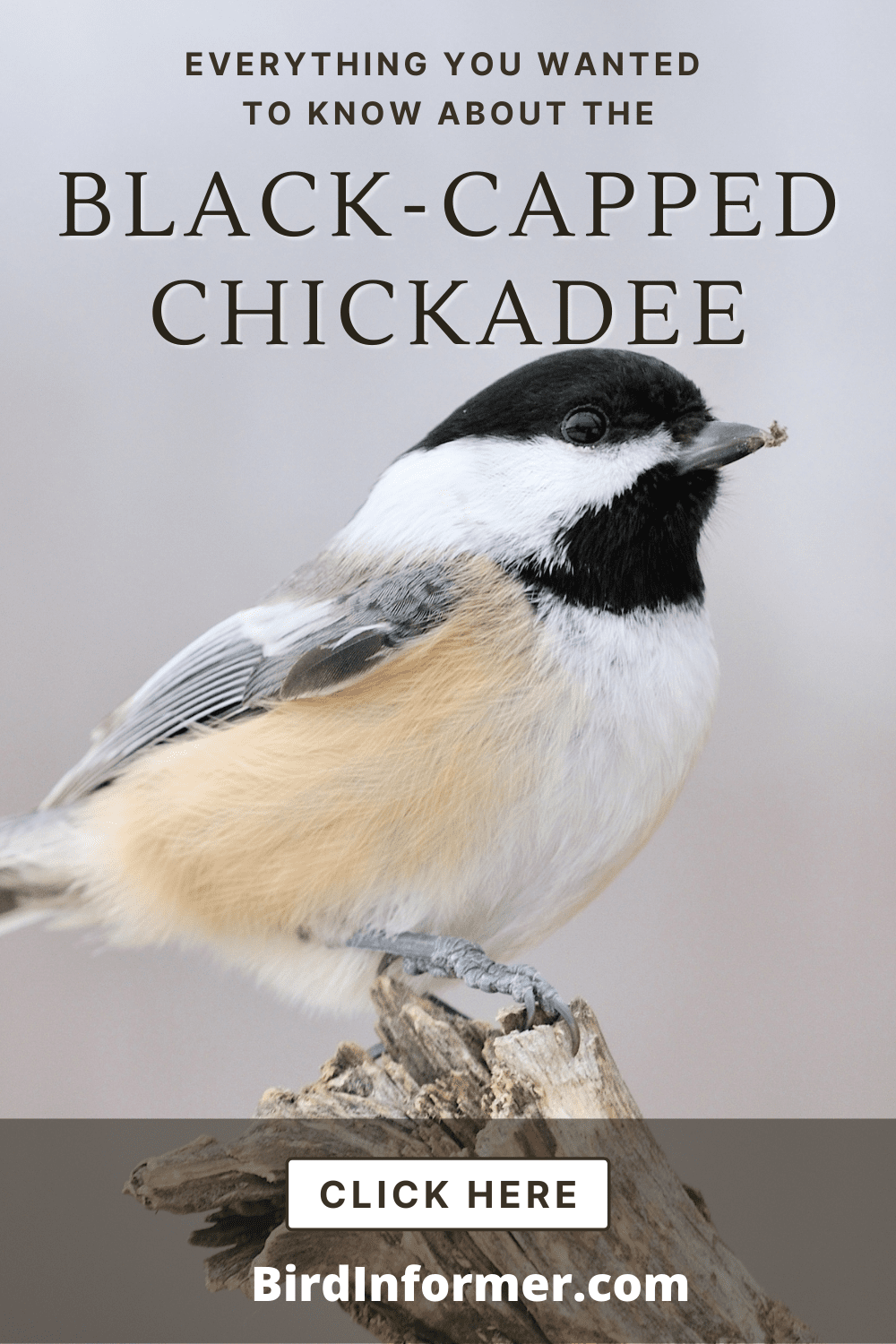Contents
- Black-capped chickadee facts
- Black-capped chickadee: how-to identify
- Black-capped chickadee bird vocalization
- Where You’ll See A Black-Capped Chickadee
- Black-capped chickadee diet
- Black-capped chickadee nesting
- Black-capped chickadee behavior
- How-to attract black-capped chickadees
- Black-capped chickadee threats
- Black-capped chickadee fun & interesting facts
- Black-capped chickadee related species in this family
The Black-Capped Chickadee, as the name implies, features a black cap on its head. They are small-sized, round birds that mainly feature black and white colors.
You’ll notice that the Black-Capped Chickadee also has a black bib, white cheeks, the back part is a light gray color, and the underparts are a bit of olive. Their bibs are small, and their wings are colored gray with white edges.
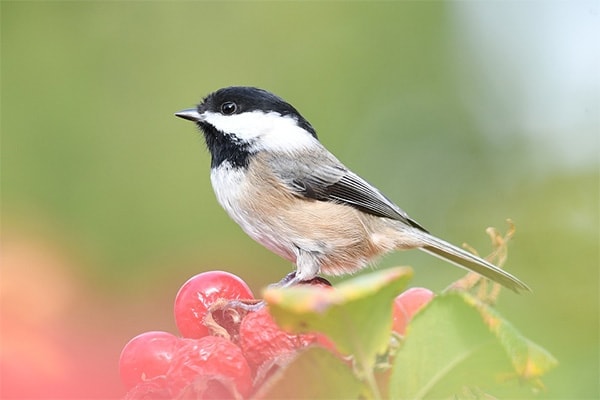
Black-capped chickadee facts
- Common Name: Black-Capped Chickadee
- Scientific Name: Poecile atricapillus
- Scientific Family: Paridae
- Life Span: 2-3 years
- Size: 4.7 to 5.9 inches
- Wingspan: 6.3 to 8.3 inches
- Weight: 0.3 to 0.5 oz
- Conservation status: Least Concern (LC)
Black-capped chickadee: how-to identify
Black-Capped Chickadee, as the name implies, features a black cap on their head. They are small-sized, round birds that mainly feature black and white colors.
You’ll notice that these birds also have a black bib, their cheeks are white, the back part is a light gray color, and the underparts are a bit of olive. Their bibs are small, and their wings are colored gray with white edges.
Differences Between Male & Female
Male and female Black-Capped Chickadees looked very similar that you might only be able to tell the difference from their bird call. However, most people have also noticed that male Black-Capped Chickadees have larger bibs than females.
Differences In Summer Plumage vs Winter Plumage
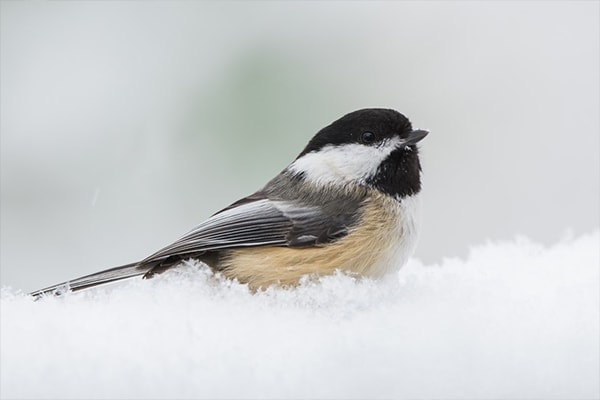
It has been noted that the main difference of the Balck-Capped Chickadee’s plumage between summer and winter is the wing feathers. It has been observed that the white edges on the wings are clearer in winter than in summer.
Black-capped chickadee bird vocalization
Where You’ll See A Black-Capped Chickadee
Black-Capped Chickadees are abundant in the northern United States and Canada. They commonly inhabit deciduous and mixed woodlands, open woods, parks, cottonwood groves, and even disturbed areas. They also love to be in places with higher elevations.
If you’re in Canada and Alaska, then the chances of seeing these birds in your backyard are really high. Well, given that you can provide the right requirements.
Black-capped chickadee bird migration
Black-Capped Chickadees are considered non-migratory birds. So, if they aren’t found in your area, you might need to visit the nearest state to see them. Year-round you’ll be able to find them starting from New England down to the West Coast.
There are times when the birds need to fly out or move large distances because they’re too many in one area. If they have to, they go south but not as far into Carolina. They will be casually in southern Missouri, eastern Kentucky, Arizona, Texas, and Oklahoma, usually in the fall or winter.
Black-capped chickadee diet
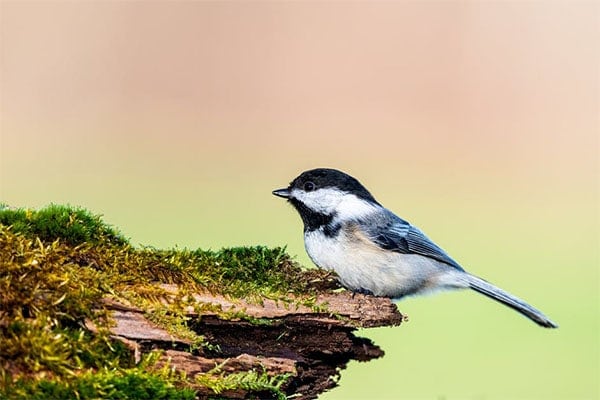
Black-Capped Chickadees, like many other birds, are what we consider omnivores. So, they eat half-plant material like seeds and berries and half-animal material like insects, spiders, and even meat. The proportion of their diet would also usually depend on the season.
If it’s spring, summer, or fall, about 80-90% of their diet would be animal food. So they look for insects, spiders, caterpillars, snails, and other invertebrates who eat fruits. While in winter, they eat many fruits because there’s not a lot of insects going around that season. Added to that, they also eat some fat from dead animals around.
Since these birds have great metabolic requirements, they find it essential to stack some food in tree barks, leaves, and other hiding spots. They do this if there is plenty of food supply. So, during summer, they just search for a lot of food so that when the weather is harsh, they’ve got a stack to go to.
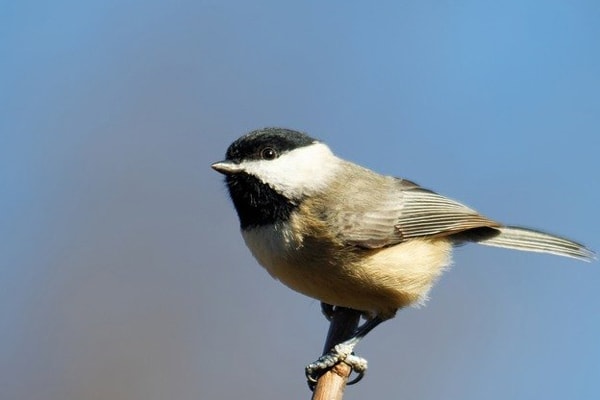
Black-capped chickadee nesting
- Clutch Size: 1-13 eggs
- # of Broods: 1 brood
- Incubation Period: 12-13 days
- Nestling Period: 12-16 days
- Egg Description: White with fine reddish-brown dots or spots
Black-Capped Chickadees build their nests in tree cavities or holes. So, it’s either they made the holes themselves, or they just look for a hole pecked by a Woodpecker. If it’s a natural hole, the male and female birds work together to widen the interior.
Once the interior is widened, the female Black-Capped Chickadee will start constructing a cup-shaped nest. Materials used are usually mosses, grasses, bark, animal hair, feathers, and other materials they find around.
The male bird is the one who protects the territory and brings in food as the female warms the eggs until it hatches.
Black-capped chickadee behavior
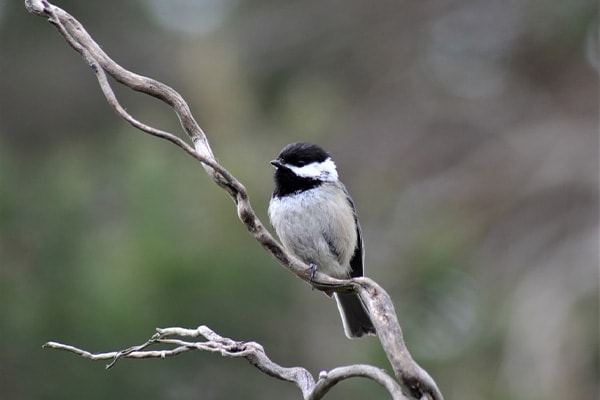
Black-Capped Chickadees are known to be active and acrobatic birds often seen hopping on trees and on the ground instead of walking. They can also be seen searching for food upside down.
They are also curious and social birds, often seen with other small woodland bird species in winter. However, once the breeding season starts, they often come in pairs and can be very territorial.
There’s a dominance hierarchy existing with this group of birds, which can directly affect mating and food resources. Males are known to be dominant than females, and those who are older are generally more dominant.
If two dominant birds mate with each other, they’re the ones who have better access to nesting sites, nesting materials, and even better food resources.
How-to attract black-capped chickadees
Black-Capped Chickadee is one of the easiest birds to attract in your backyard. And like most birds, all you really need is to provide them with all their basic needs – food, water, and shelter.
You can just hang a bird feeder with their favorite food, and you can expect these birds to fly in. They absolutely love black oil sunflower seeds, suet, sunflowers, or even peanuts. You can try hanging feeders and even window feeders.
Since these birds also eat insects, it’s best if you minimize insecticides. You can also plant trees and shrubs where they can nest or eat berries. Flowers and vines will also help so the birds can also feed on seeds.
Next, be sure to provide fresh, clean water they can drink and bathe in. A heated birdbath would be perfect for this. And if you wish to provide nesting sites, a nesting box is great, or you can create a simple shelter they would love. Add some sawdust and wood shavings so the birds will extra love it.
Black-capped chickadee threats
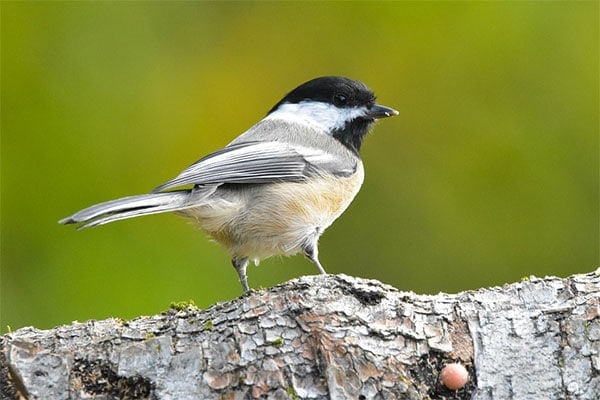
Fortunately to Black-Capped Chickadees, their numbers have been seen increasing well. With the many forest clearings happening, habitat for these birds is also growing. However, if people start cutting off many dead trees, birds nesting in tree cavities will lose homes.
Some predators can affect their numbers like hawks, owls, raccoons, squirrels, weasels, and house wrens. However, Black-capped chickadees are often seen to help each other by mobbing predators and scaring them away.
Black-capped chickadee fun & interesting facts
- Black-Capped Chickadee is the state bird of Maine and Massachusetts.
- Their birdcall is one of the most complex vocalizations of all animals; there are thirteen distinct types of vocalizations identified.
- They hide or stack food in different sites and recall where they are for up to 28 days.
- They can replace old neurons with new ones to give more space for new information.
- Northern Black-Capped Chickadees have a larger hippocampus than their southern counterparts.
- Mountain Chickadee
- Carolina Chickadee
- Chestnut-backed Chickadee
- Boreal Chickadee
- Bridled Titmouse
- Oak Titmouse
- Juniper Titmouse
- Tufted Titmouse
- Black-crested Titmouse

